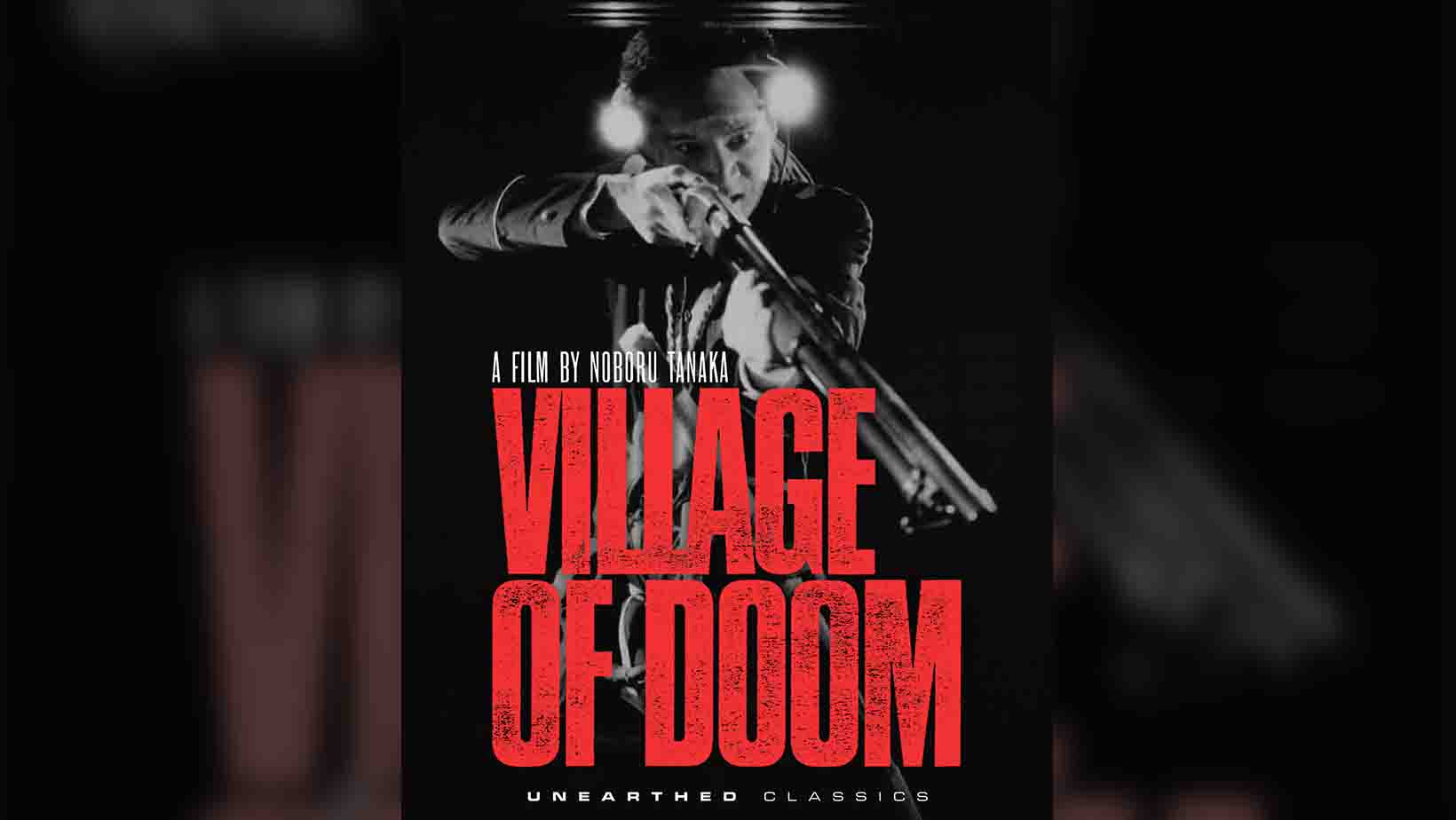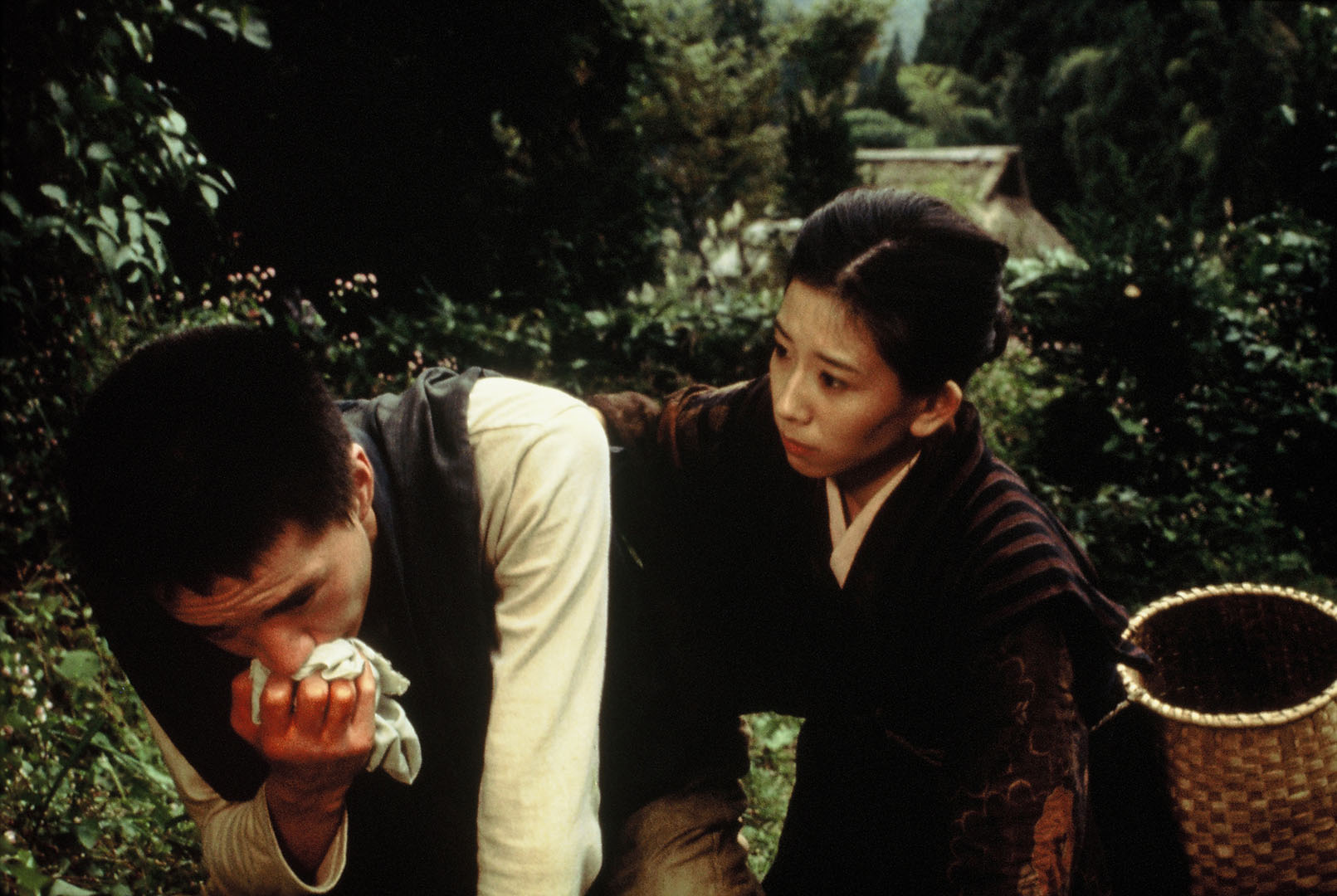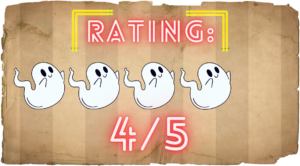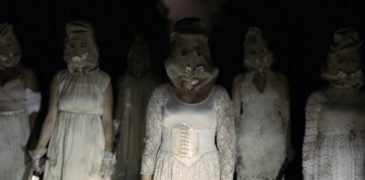

Village of Doom is a 1983 Japanese period crime thriller, written by Bo Nishimura and Takuya Nishioka, and directed by Noboru Tanaka. Primarily working as a Roman Porno director under Nikkatsu Studios, Tanaka began his directorial career with the softcore drama Beads from a Petal (1972) and continued to make many classic pieces of Nikkatsu’s memorable film catalog–such as (Maruhi) shikijô mesu ichiba (1974), Angel Guts: Nami (1979), and Rape and Death of a Housewife (1978).
After a diagnosis of tuberculosis prevents him from joining the military and serving in World War II, a young man becomes ostracised by the members of his small, rural village. As a result, the emotionally distraught man executes a spree of mass murder to take revenge on those who excluded him.

Based on the infamous real-life tragedy of the Tsuyama Massacre, Village of Doom is a visceral reenactment of the killing spree that occurred in Kamo, a small village near the city of Tsuyama, Okayama Prefecture on May 21, 1938. Mutsuo Toi, a 21-year-old man, who, after being diagnosed with Tuberculosis, goes on a brutal killing spree after being shunned by the entire village. Using a Remington M11/Browning Auto-5 shotgun, Katana, and axe, the perpetrator savagely murdered 30 people, injured 3, and took his own life in what is still considered one of the deadliest mass shootings in Japanese history.
Taking the time to construct its narrative organically, Village of Doom introduces the majority of its plot through naturalistic, character-driven interaction rather than a scrolling info dump like many true crime horrors of the time. The period, characters, and story are all introduced incrementally, weaving an intrinsically beguiling tale that will absorb its audience fully. Additionally, beginning with our protagonist’s life before his unfortunate diagnosis, the film’s themes of ostracisation and isolation hold more weight when introduced–effectively conveying the negative effects this has on Tetsuo’s psyche.

While Village of Doom is presented as a tragedy piece, Tanaka certainly hadn’t forgotten his roots in Roman Porno–featuring several scenes of softcore sex littered throughout the film. Furthermore, the third act provides an unhindered depiction of graphic violence as our protagonist’s killing spree begins–providing an overtly visceral rampage of bloody carnage. As such, the film undoubtedly resides closer to the pinku eiga/exploitation genre.
Although several of these murders happen off-screen, thanks to some effective cinematography and gruesome effects, these scenes are still depicted as undeniably ferocious. However, the majority of these cold-blooded acts are fully visualised, holding very little back in terms of brutality–murdering men, women, and children indiscriminately. From gunshot wounds, stabbings, and an impressive head explosion, these barbaric acts are actualised through some astounding practical special effects–unquestionably strengthening their impact.

A brutally realistic recreation of a historic mass shooting, Village of Doom’s blending of true crime, pinku, and exploitation culminates in an adroitly sanguinary experience overall. With fantastic performances, a slow-burning narrative, and grisly special effects, Tanaka’s masterful direction truly captures the horrors experienced that fateful night in 1938–sure to entice fans of both true crime and Japanese cinema.

Village of Doom (1983) can be purchased from Unearthed Film’s website here.
More Film Reviews
UFO Sweden (2022) Film Review – A Smart Sci-Fi Thriller From Sweden [Toronto After Dark Film Festival]
To believe is one thing. To know is something completely different. UFO Sweden (2022) is the emotionally driven sci-fi thriller that every fan of The X-Files needs to see. Don’t…
Deadware (2021) Film Review – Haunted Point and Click Adventure
Deadware is a 2021 American-found footage horror, written and directed by Isaac Rodriguez. Mostly known for directing horror shorts such as We All Fall Down (2011) and Russian Doll (2019)….
Zalava (2021) Film Review – Superstition, Paranoia and Demons
A little bit of superstition never really hurts anyone and for most people their superstitions are pretty mild. That isn’t the case for the residents of Zalava, a small town…
The Toll (2020) Team Review – Whispers of Violence and Despair
When Cami orders a taxi service to take her to her father’s country home, she’s hoping for a quiet and uneventful ride. But a wrong turn by Spencer, her chatty…
Human Hibachi 3: The Last Supper (2025) Film Review – The End of an Era
*I feel the need to add to this article the fact that I was engaged as a freelance contributor to the film’s post-production team, specifically responsible for creating the end…
We Put the World to Sleep (2025) Film Review – Metaphysical Found Footage [Nightmares Film Festival 2025]
We Put the World to Sleep is a 2025 found footage horror/faux documentary written and directed by AdrianȚofei, with additional writing by Duru Yücel. Filmed across 13 cities, villages, and…

Hey there, I’m Jim and I’m located in London, UK. I am a Writer and Managing Director here at Grimoire of Horror. A lifelong love of horror and writing has led me down this rabbit hole, allowing me to meet many amazing people and experience some truly original artwork. I specialise in world cinema, manga/graphic novels, and video games but will sometime traverse into the unknown in search of adventure.
![UFO Sweden (2022) Film Review – A Smart Sci-Fi Thriller From Sweden [Toronto After Dark Film Festival]](https://www.grimoireofhorror.com/wp-content/uploads/2023/10/UFO-Sweden-2022-cover-365x180.jpg)




![We Put the World to Sleep (2025) Film Review – Metaphysical Found Footage [Nightmares Film Festival 2025]](https://www.grimoireofhorror.com/wp-content/uploads/2025/10/We-Put-the-World-to-Sleep-2025-cover-365x180.jpg)